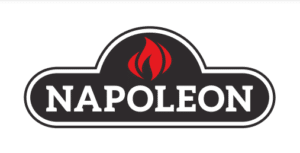There are a few common questions that often get asked about fireplaces, and some of them surround the vital concept of safety for all home occupants. One of the most common questions for one of today’s most common fireplace types: Are gas fireplaces safe?
At Comfort Solutions Fireplace, we’re here to tell you that the answer here is an absolute yes – gas fireplaces are completely safe, and in fact often considered safer than wood-burning and other options. We offer a huge range of modern gas fireplaces for clients around Salt Lake City and other parts of Utah, plus comprehensive use and safety recommendations to ensure everyone in your home is always safe while using any of our products. Here are some basics on staying safe near or while using any gas fireplace.
Clearance Zones and Safety Screens
Like any fireplace that directly emits heat, gas fireplaces require a certain amount of clearance on all sides to ensure there’s no fire risk. The specifics here will depend on the exact model you’re using and other variables determined during installation – we’ll cover each of these on an individual basis for every client we work with.
In addition, safety screens are often used on gas fireplace fronts as an extra layer of protection. These screens prevent any debris or embers from escaping the fireplace and potentially causing harm to people or flammable objects on the other side.
Carbon Monoxide and Oxygen Levels
One common concern with gas fireplaces is whether they might emit dangerous levels of carbon monoxide (CO) into the home. However, this is not a major concern as long as proper maintenance is performed on the fireplace on a regular basis. Gas fireplaces should be inspected and cleaned at least once a year to ensure they are functioning safely and efficiently.
In addition, gas fireplaces do not require any additional oxygen to operate – they simply use the air in your home for combustion. This means there is no danger of depleting oxygen levels in your home while using them.
Regular Maintenance
Another simple but crucial aspect of gas fireplace safety is regular maintenance. This includes cleaning the interior and exterior on a regular basis, as well as having a professional inspect and service the fireplace on an annual basis. Any signs of wear or damage should be addressed immediately to prevent potential hazards.
Childproofing
For families with young children, it’s important to take extra precautions around gas fireplaces. Installing a safety gate or screen around the fireplace can prevent children from getting too close and potentially touching hot surfaces. It’s also important to teach children about the dangers of fire and how to safely interact with fireplaces.
Gas fireplaces are safe as long as they are properly installed, used, and maintained. With proper precautions and regular maintenance, you can enjoy the warmth and beauty of a gas fireplace without any safety concerns. At Comfort Solutions Fireplace, we prioritize safety in all our products and services to provide our clients with complete peace of mind. Contact us today to learn more about our gas fireplaces and how we can help keep your home safe and cozy.

